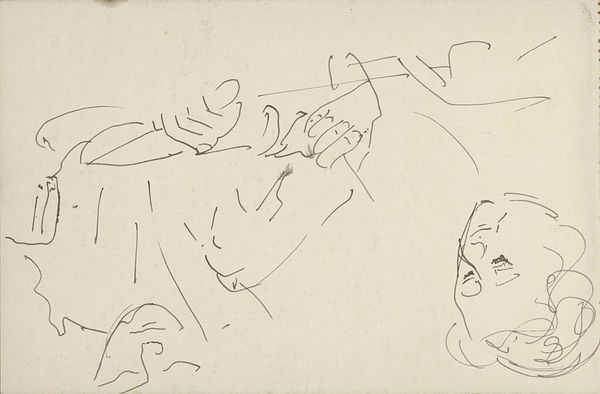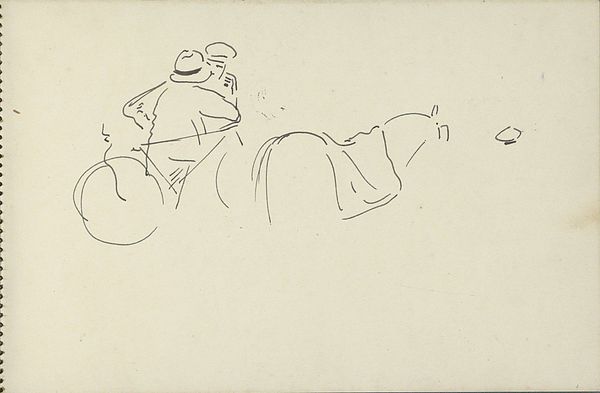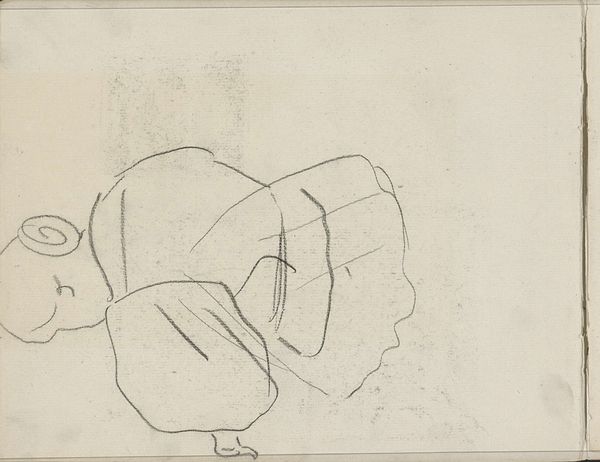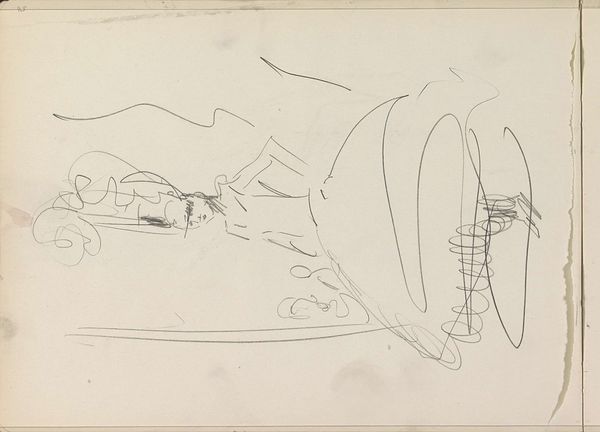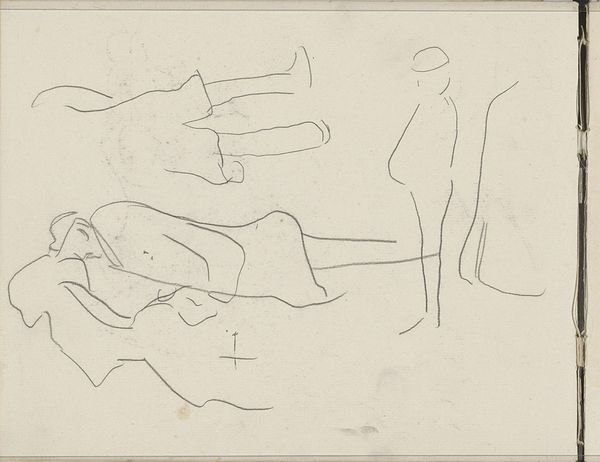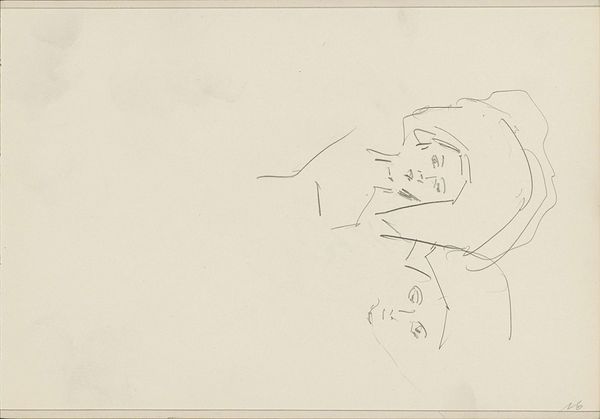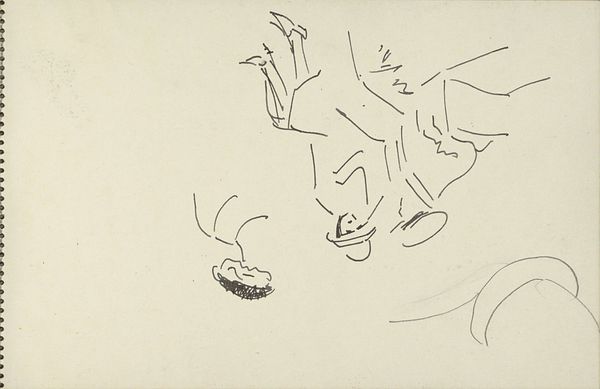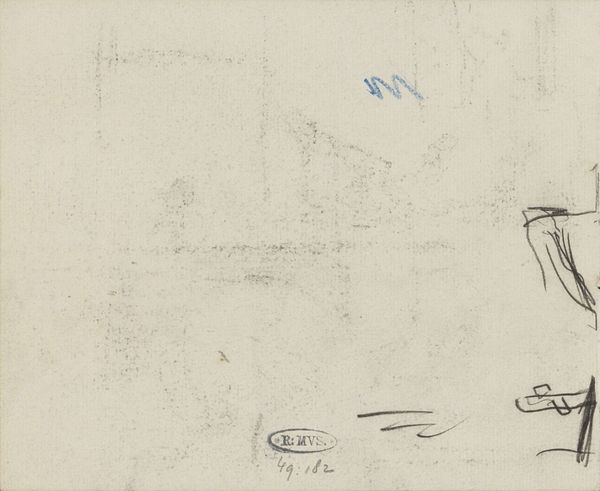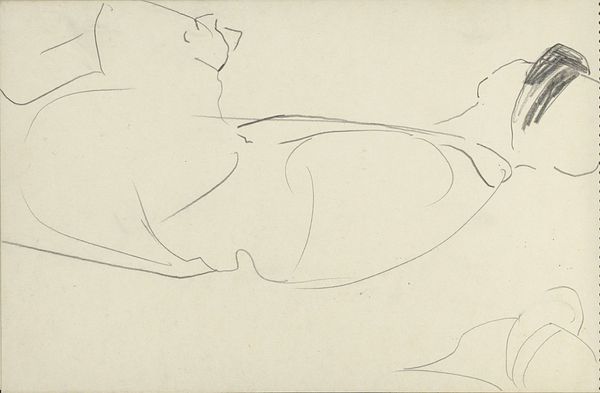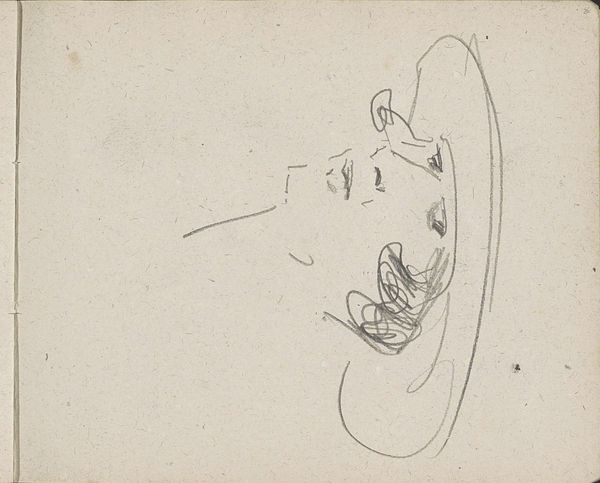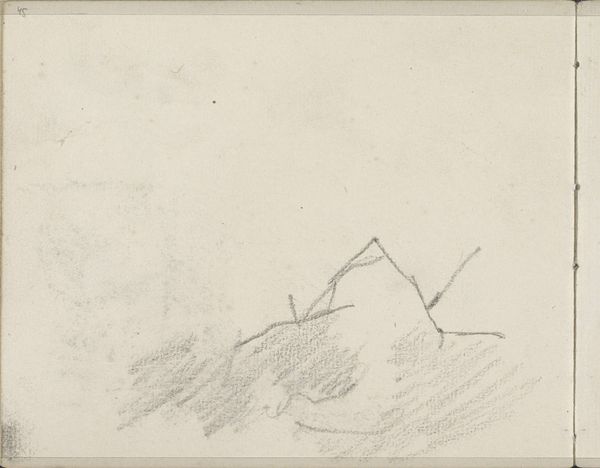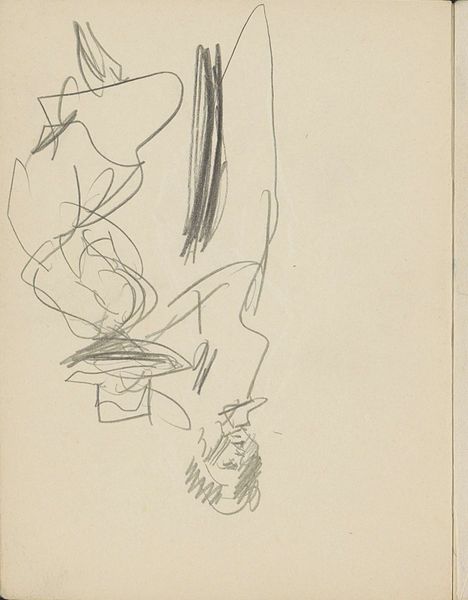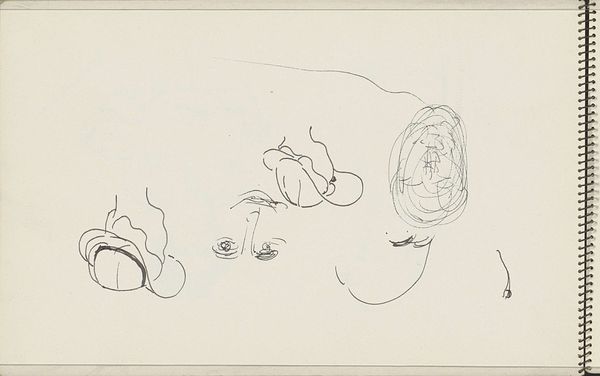
drawing, paper, pencil
#
portrait
#
drawing
#
figuration
#
paper
#
geometric
#
pencil
#
line
#
modernism
Copyright: Rijks Museum: Open Domain
Editor: So, this is Carel Adolph Lion Cachet's "Head with a Headscarf," a pencil drawing on paper, circa 1930-1938. The sketchiness gives it an ephemeral quality. What’s striking to me is the raw simplicity of the line work, the minimal effort. How would you approach analyzing this piece? Curator: I find this kind of sketch particularly engaging, because it immediately directs our attention to the *process* of art-making. Consider the paper itself, a common, relatively inexpensive material, likely a page from a sketchbook. The artist's deliberate act of choosing pencil -- such an accessible and democratic medium -- sets the stage for understanding how artists democratized their craft, using commonplace items and spaces for producing art. It asks a question, “What are the conditions that allow for and perhaps shape art making?". Editor: That's a great perspective. It moves away from the traditional emphasis on artistic genius. Were artists doing this in a conscious act of defiance, perhaps against more academic or formal art traditions? Curator: Precisely. We need to look at the social context. Modernism questioned established hierarchies. This drawing, by virtue of its medium and apparent speed of execution, challenges the preciousness often associated with "high art". Did the conditions of labor affect artistic choices? The question extends into how art materials themselves – paper, pencil – are manufactured and consumed. Was the accessibility to materials enabling the artist to capture fleeting moments, or commentary on the readily-available consumables during the era? Editor: It almost seems like Cachet is using the act of drawing itself as a form of social commentary. The simplicity feels intentional. Curator: Exactly. By de-emphasizing elaborate technique and focusing on basic materials, Cachet subtly shifts our attention. Instead of *what* is depicted, he wants us to think about *how* art is made, and within what socio-economic frameworks that occurs. The line work is deliberate but lacks refinement which provides insight on mass manufacturing capabilities in Europe. It’s not merely a portrait but also, if inadvertently, a document about making. Editor: That's fascinating. I hadn’t considered that this simple sketch could open up such a rich discussion about art production and consumption.
Comments
No comments
Be the first to comment and join the conversation on the ultimate creative platform.
